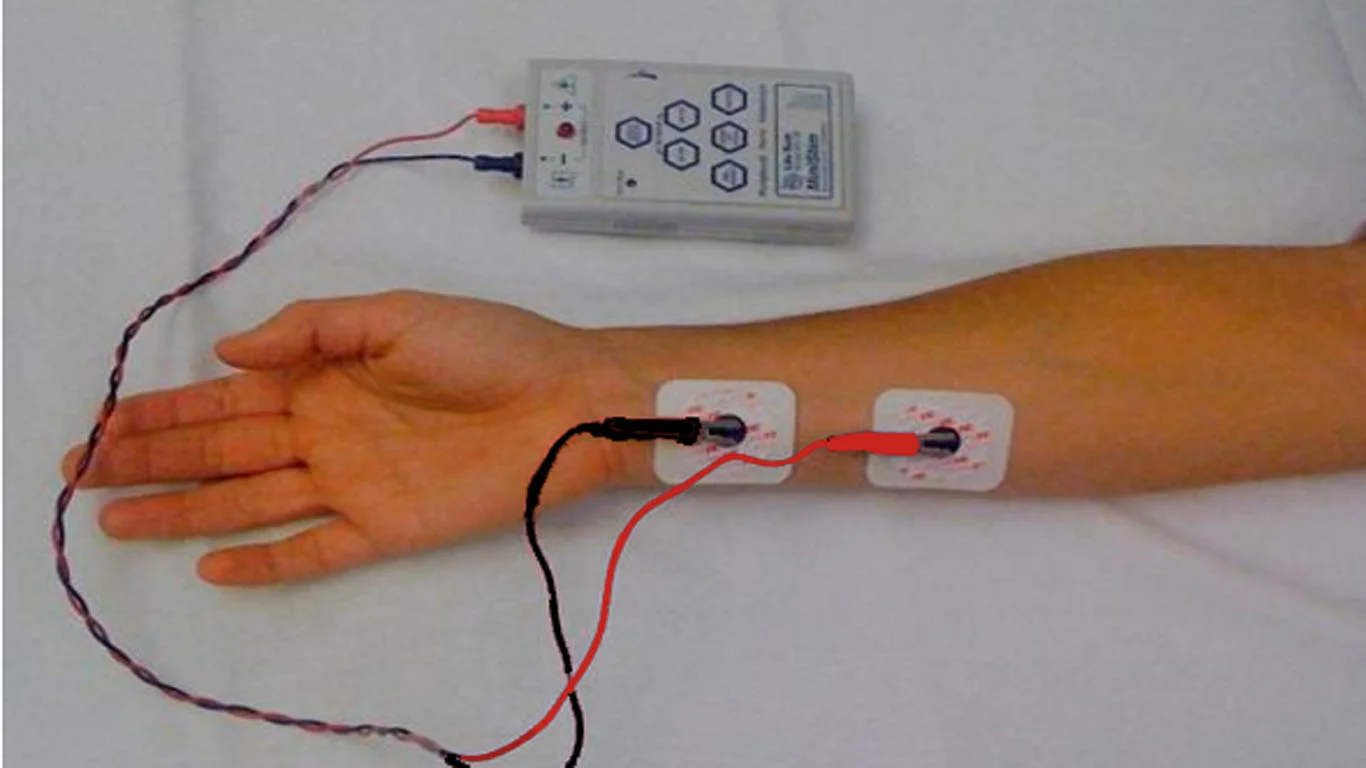Train Of Four Monitoring
A peripheral nerve stimulator, also called the "train of four", is used to assess nerve function in patients receiving neuromuscular blocking agents (AKA paralytic medications). It is commonly seen used in critical care units.
The main diagnosis that I have seen in my medical ICU for continuous paralytic use is with influenza patients in acute respiratory distress syndrome. These patients have literally no reserve and need to have their muscles as relaxed (or paralyzed) as possible to not push against the air being delivered by the breathing machine. Patients are sedated and then placed on a continuous paralytic drip (our choice of drug is Cisatracurium, or Nimbex) to paralyze the patient. The train of four is a tool that helps us to monitor the level of paralyzation of the patient so we do not over-paralyze them and cause unnecessary muscle atrophy.
How To Perform The Train Of Four
Before giving the patient any paralytic medication, you MUST get a baseline train of four. This tells you how much electrical stimulation the patient needs for nerve stimulation without any paralytic on board ( AKA your baseline). There are a variety of areas which you can set up the nerve stimulator; the two most common are at the ulnar nerve or the facial nerve. Pick which nerve you would like to perform the nerve stimulation on. Place electrodes and nerve stimulator probes on the patient as shown in the pictures on the right.
The train of four received its name because the machine delivers four electrical impulses one after the next. For the baseline, you want to start with as low of electrical impulse as the machine can give and let it deliver its four shocks. Look at the patients pinkie finger (if ulnar nerve stimulated) or eyebrow (if facial nerve stimulated) and see how many times they twitched. Did they twitch four times with the four electrical impulses (4/4)? Did they twitch only with two of the impulses (2/4)? The goal is to find the lowest electrical impulse at which the patient twitches four out of four (4/4) times. You would be sure to tell the oncoming nurse, "The patient's baseline is 10 mA for 4/4 twitches with the train of four."
Each hospital has different protocols when titrating paralytics (or leaving them at a continuous rate), so be sure to find your particular protocol and follow it. These are just some general guidelines to go by.
The normal goal for an adequate level of paralyzation of a patient is for the patient to twitch 2/4 times with the train of four. If they twitch 4/4 times, the paralytic needs to be increased because their muscles are still too responsive (AKA need to be more paralyzed). If they twitch 0/4 times, the patients muscles are too paralyzed (you need to decrease the paralytic). Again, check your hospital's protocol to see how to titrate your paralytic to the train of four.
Why Even Bother?
Why does it matter if a patient receives too much paralytic? Isn't the point for the patient to be paralyzed? In Neuromuscular Blocking Drugs in the Critically Ill, it states that:
“Overdosage and long-term use of NMBDs may result in the accumulation of parent drug or its active metabolites. Over time, peripheral compartments become saturated and clearance of the drug is decreased. The drug is stored in the basement membrane of the neuromuscular junction, which then acts as a reservoir. Electrolyte and metabolic derangements may potentiate the neuromuscular block (Table 2). Hypothermia has been reported to prolong recovery from pancuronium, vecuronium and atracurium. Even a slight reduction in core temperature (2–3°C) nearly doubles the duration of action of vecuronium and atracurium.” -Tripathy & Hunter
By monitoring the continuous paralytic using the train of four, we are able to keep the correct dose of paralytic in the patient's circulation. This will allow for faster recovery after the paralytic has been discontinued.
Other relevant posts include:








